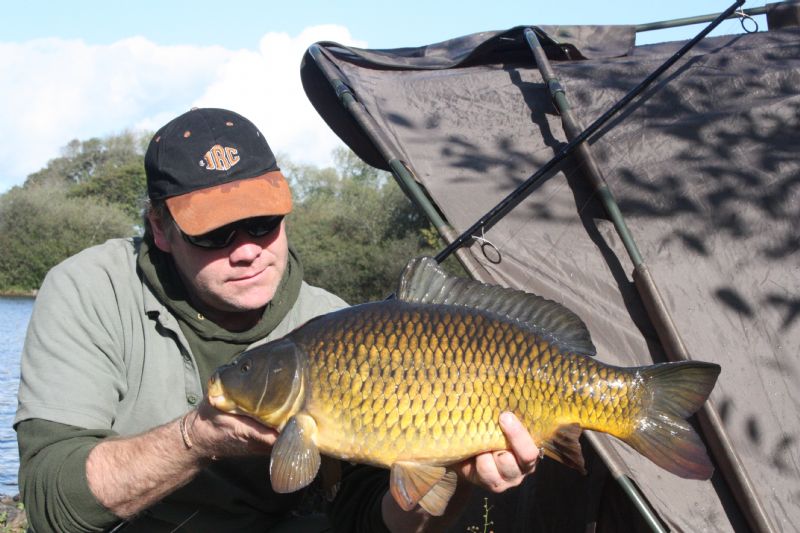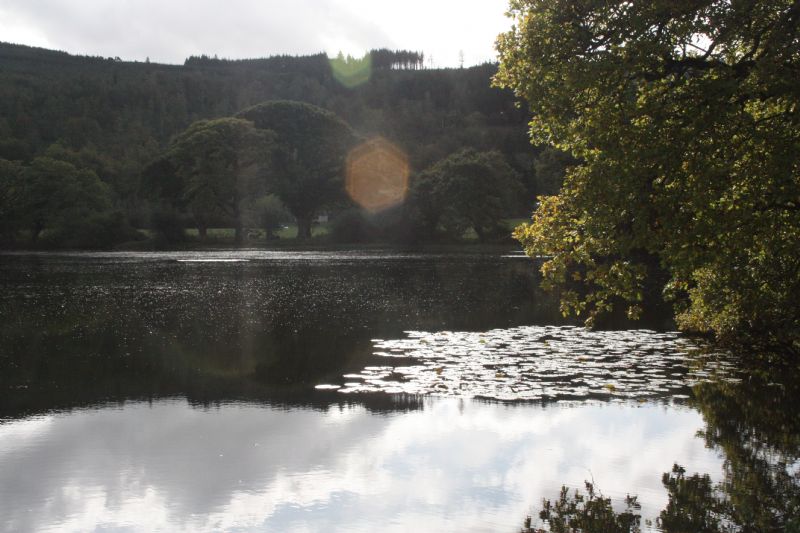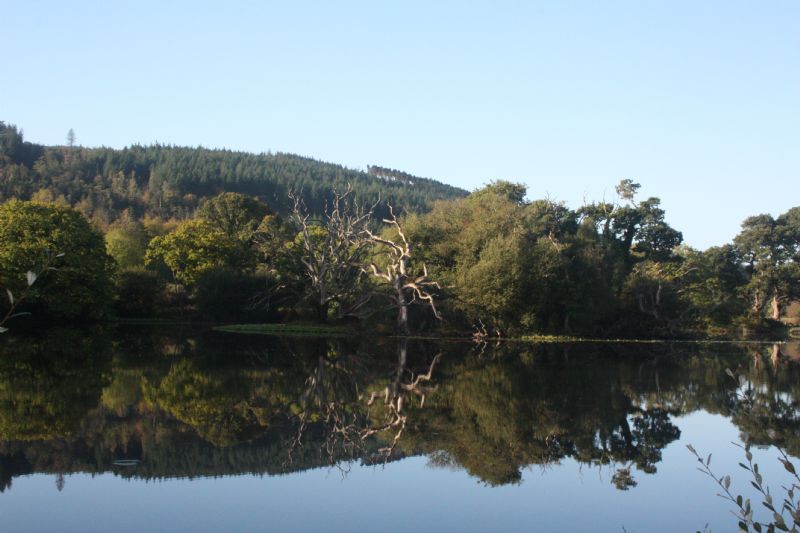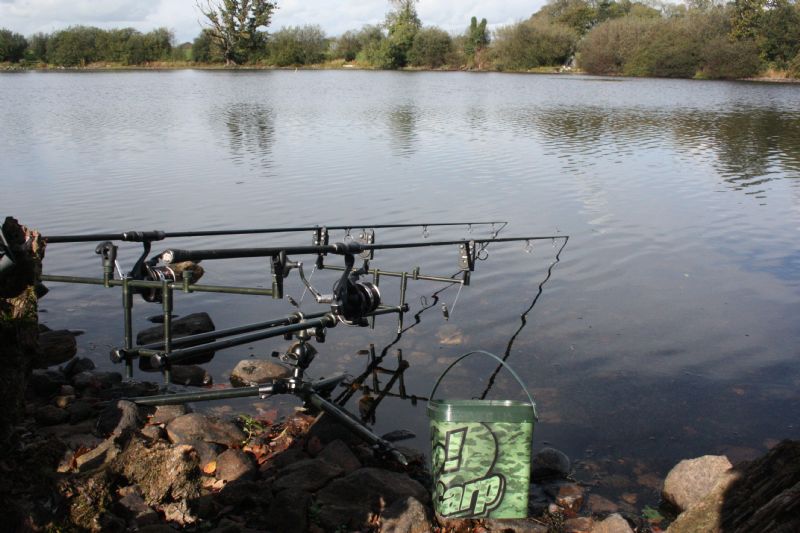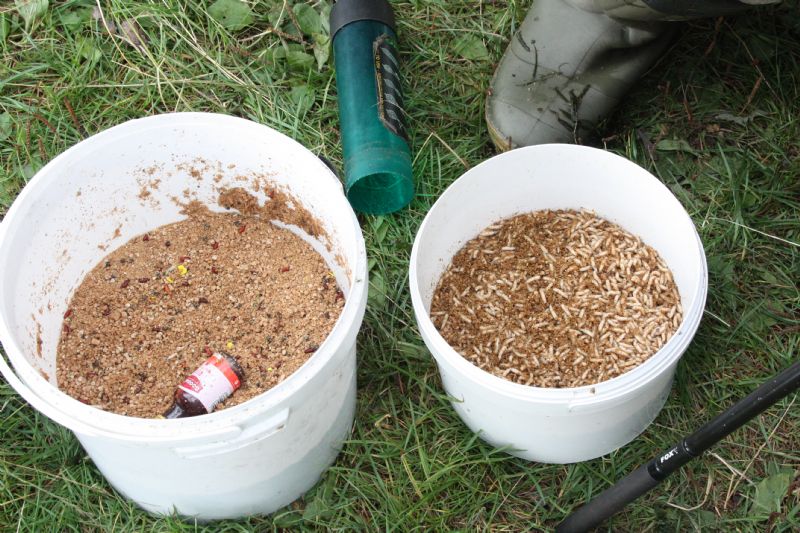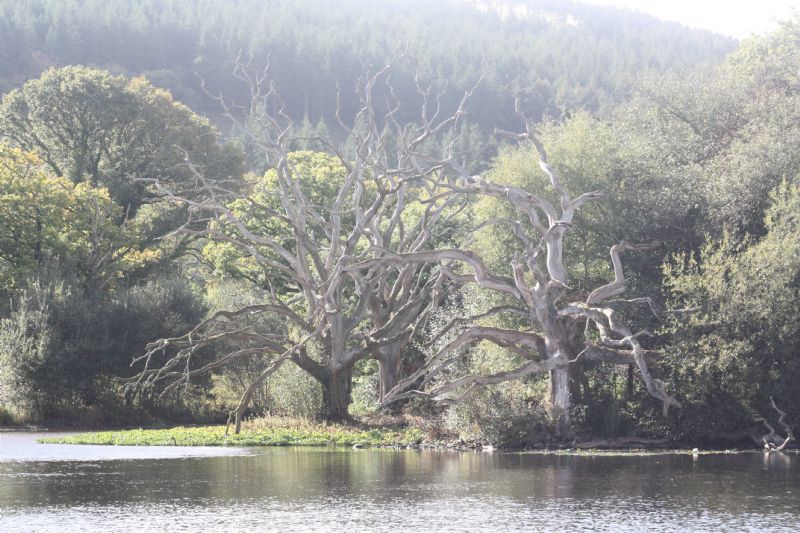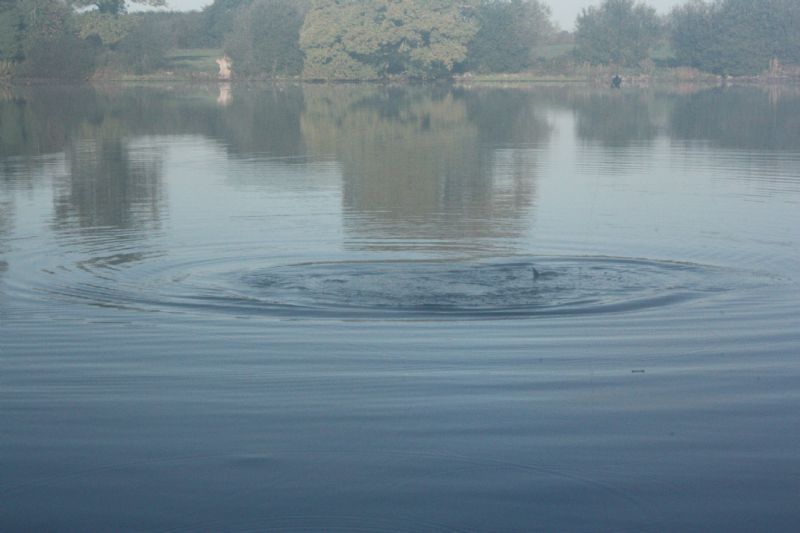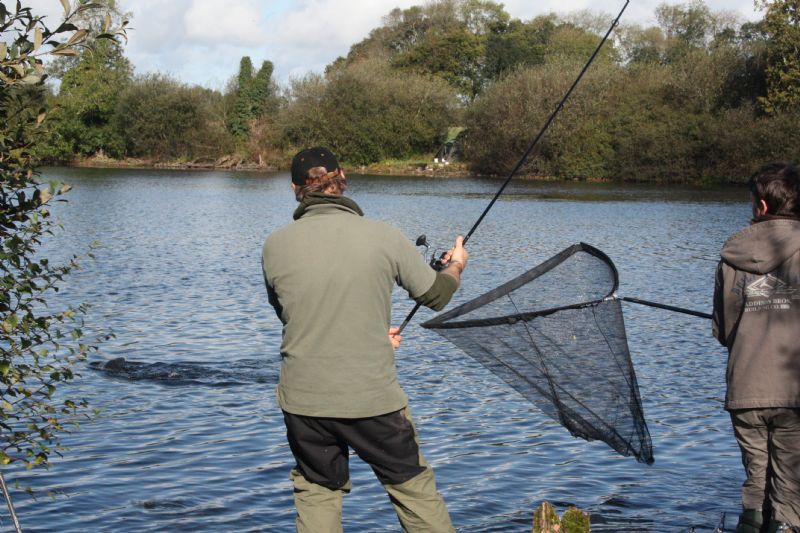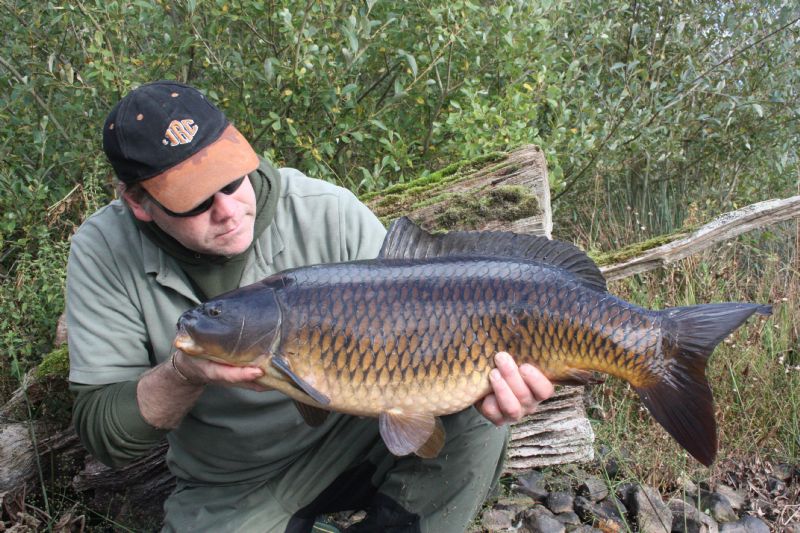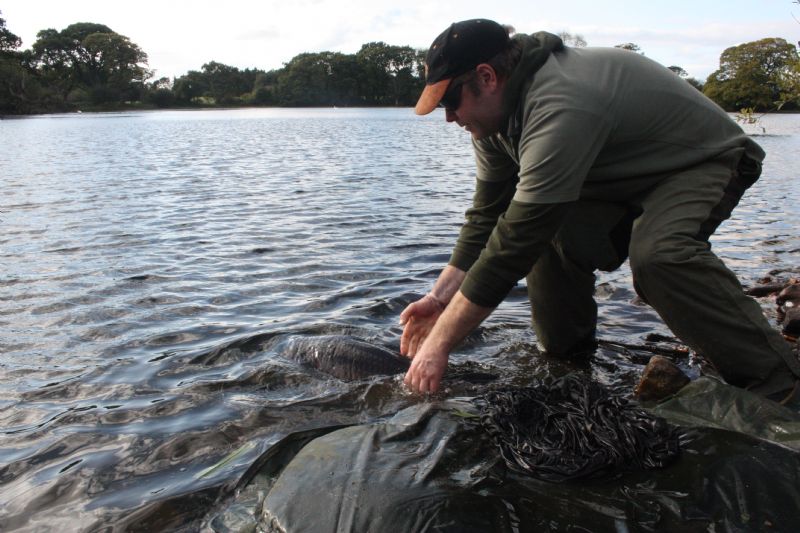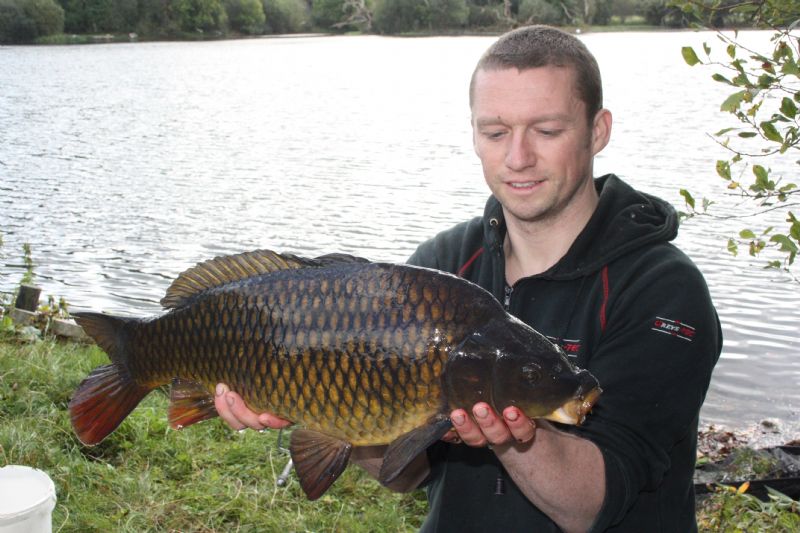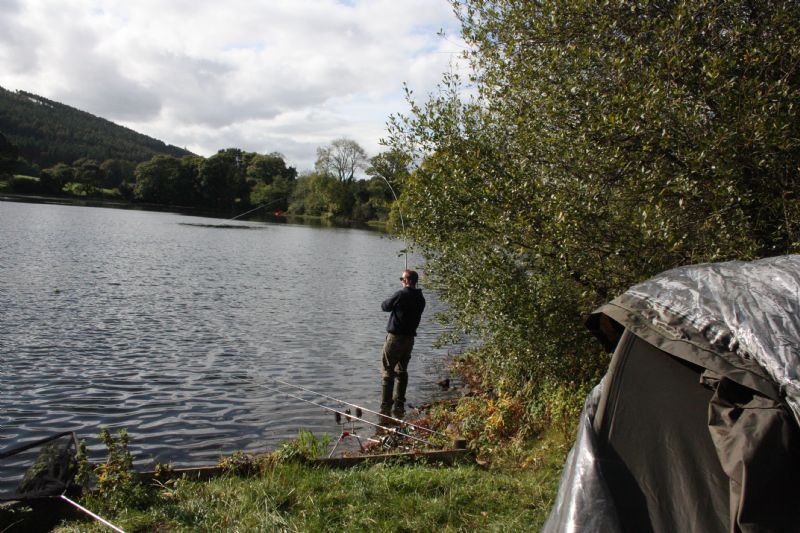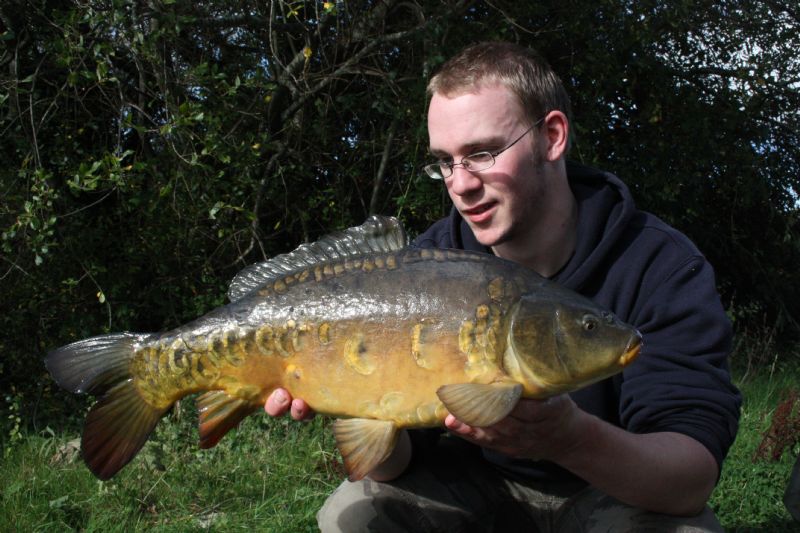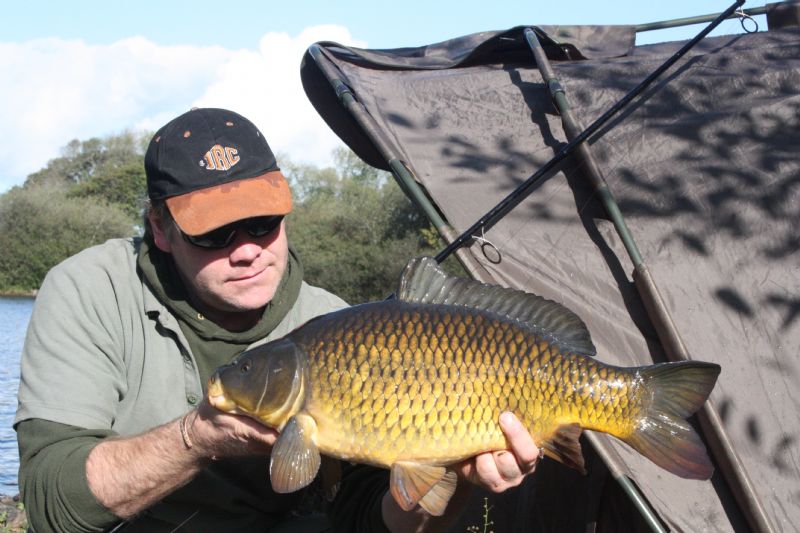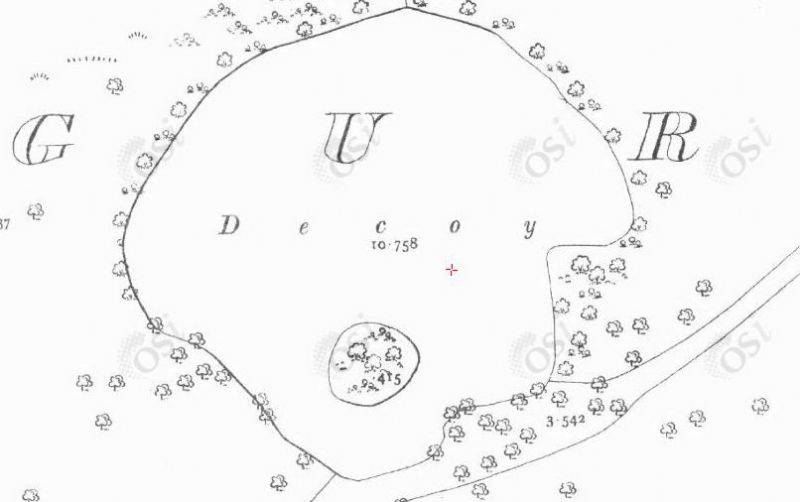Decoy Lake
Terry’s Travels
Decoy Lake
My initial introduction to Decoy Lake was back in May of 2011, through my involvement with Inland Fisheries Ireland and a chance meeting with local angler and instructor Philip Maher.
We had been successfully surveying the possibility of Twaite Shad on the River Suir, when Philip invited Mark Corps and I to have a look at this particular Carp water situated a few minutes from Carrick-on-Suir.
Of course, although never having seen this famous water before, I had certainly heard numerous tales of arguably the largest Carp in Ireland that once resided there, along with many other juicy stories, controversial rumours and Carp politics. I am not a lover of politics, Carp or otherwise and will avoid that avenue of pleasure on this occasion! (Coward!)
Perfect serenity, lily fringed, beautiful
Arriving at the parking area on the private and wonderfully serene Gurteen Estate, I could not wait to take a walk around the lake’s perimeter and soak up the atmosphere of this ancient water first hand. It looked shallow with excessive weed growth, but every bit the Carp water I have heard so much about. On first impressions, it would blend in seamlessly with any mature Carp water that the south of England could offer. For the syndicate members, this must have been such an exciting water to fish in the late 90’s, as even now as I approached the water’s edge, I could feel my adrenaline building. Unfortunately, I would not be fishing, but simply taking in the atmosphere and hopefully spotting a Carp or two as we stealthily crept along the water’s edge.
Half-way around the lake, we met a current syndicate member, “bivvied-in” for his second consecutive and fish-less night, as we soon found out. I had been told that Decoy was considered a challenging water but was not prepared for his next statement, “I haven’t had a fish in two years on this venue”! He reckoned that a family of otters had munched their way through the stock. The otter problem was verified by Philip, but this had recently been rectified by fitting an electric fence around the perimeter as an environmentally friendly deterrent. Increasing populations of otters and cormorants are a huge problem throughout our inland waters, exacerbated in no small way by our diminishing coastal fish species.
As I chatted to the angler, I spotted a bright orange Koi, at least twenty pounds if it was an ounce, cruising just below the surface a few hundred yards away. At least there was one fish in here! Mark and Philip walked round for closer inspection and identified another six large Carp shoaling with the Koi, estimated between twenty and thirty pounds, so things weren’t quite adding up here! We walked back to the jeep, confused at the conflicting evidence.
This is when Philip asked if I would fancy a night's angling on Decoy. I’m certainly no Carp expert, but he argued that a fresh approach with my match angling background may un-lock some Decoy secrets. I certainly wasn’t going to argue, as I would relish a night on this historic water, if only to say that I had fished it just the once. I could choose my night, and bring along three angling mates for company. Andrew Wolsey was my first choice, along with Ross Macklin and Bill Brazier, my two good friends who not only successfully Carp fish but also have huge experience in Irish freshwater biology and ecology.
In fact, they carried out a scientific study on Decoy stocks in 2010, and I thought it would be interesting to see if and how the water had developed since then. Unfortunately, the only chance all four of us could get together would be the end of autumn-winter period, but hopefully, a fish or two would turn up between us. However, the syndicate angler’s story did not exactly fill me with confidence!
Secret weapon on this occasion! Several gallons of maggots, not a boilie in sight
Five months passed and we were finally back at Decoy. The temperature was a great deal cooler than my previous visit, and there was a noticeable abundance of extra weed growth. It was fortunate that Bill had the foresight to bring a few custom made weed rakes with him. With little time to spare, we spent quite a few man hours raking out small clearings for pre-baiting and bait presentation, then once suitably satisfied, fed accurately but sparingly, quietly casting our scaled down rigs into the freshly cleared areas. With information that Decoy is now an extremely challenging water, accuracy and finesse in my opinion, were the likely keys to success here.
These ancient trees look sureal, what a back-drop
For the rest of the day, and right through the night, our alarms failed to utter a single beep, apart from Andrews’ left hand rod. A dropped run or possibly a line bite, it was difficult to tell, but it proved that something was moving about in front of us. With the disturbance caused by raking the swim, it was hardly surprising that the Carp were in a “cagey” mood. Ideally, a few days rest after disturbing a swim would be favourable, but we did not have that luxury of time. On occasion, Carp and Tench will move into a raked swim reasonably quickly, in search of easy pickings, fingers crossed that this was such an occasion!
Carp breaking the surface at first light
By first light, although fishless, our situation seemed to be improving. A number of Carp were active over the cleared areas, obviously interested in their new landscape, and we were hopeful for some action. We counted eleven simultaneous surface disturbances from reasonable sized fish, some within a few feet from the bank-side; surely a run was on the cards? Do we freshen our baits and re-cast, or remain patient and leave well alone?
Almost there!
Patience was rewarded when my left hand Delkim told me a fish had taken the “chod-rig” and was on its way through the clearing and heading for the densest weed beds. The JRC Razor did its job, as I applied controlled pressure to turn the fish and play it on the surface. After a few spirited minutes involving several heart-stopping moments, Andrew slipped the net under my first Decoy Carp, and what a beautiful specimen it was, pushing the scales close to the twenty pound mark, and in fighting fit condition.
Amazing colours! Stunning Decoy twenty pounder
Safely returned
Ross was next with an immaculate common just making double figures, and Bill quickly followed with a very pretty mirror, again breaking into the double figure weight-band. We all desperately wanted Andrew to find a fish before the end of our session, but that’s fishing as they say. The last fish came to me on the same “chod-rig” as earlier, and tipped the scales at ten pounds. It was an absolutely immaculate common, and bloody hell, could it fight! For a second or two, we thought that I had maybe found one of the thirties. Unfortunately not, but pound for pound, probably the best scrapper I have ever had the pleasure to run into with the Carp rods, and quite possibly a French-Irish cross.
Ross Macklin with another scale-perfect Common
There was no sign of that day-glow orange Koi that I spied five months earlier, but I almost tempted a white Koi in the ten-twelve pound region that hung around all morning. It took two white maggots on waggler tactics but my match-angling reactions aren’t quite as sharp as they used to be and I missed the take as the float buried! I would have loved to have felt the power of that slim-line torpedo but it wasn’t to be on this occasion.
Bill playing his first Decoy Carp
We ended the single night and day session with three stunning commons, one very cute mirror, two dropped runs and a missed Koi Carp. Not bad considering the statement from the angler I met on my first visit! Were we lucky? Possibly. Did we do anything different? I have no idea, but we caught beautifully conditioned Carp on an absolutely delightful water. It was a very enjoyable experience for all of us.
Ross and Bill scrutinised all four fish, weight, length, girth and especially the scale growth patterns. A small scale was carefully removed from each fish, adding anti-sceptic to the area. Although carp regularly lose scales, especially during spawning time, it is better to err on the side of caution to avoid infection. Later studies showed incredible, recent growth spurts. The larger Common was only six summers old, and the smaller Commons and Mirror only five summers old.
Losing some of the stock through predation may have allowed the remaining fish to show their true growth potential, certainly, the Carp we managed to tempt were in superb condition. This possibly bodes well for the remaining fish at Decoy, with the potential to reach huge proportions by Irish standards. The weed growth is problematic but the owners are looking into possible methods of control or extraction in parts.
About Decoy
Scientific research is currently being undertaken at University College, Cork. It is looking into Irish Carp biology, ecology and genetics in an attempt to understand more about this species in Irish waters, both past and present.
Bill Brazier and Ross Macklin have studied Decoy, not only from an ecological and biological angle but have also put considerable time and effort into the historical back-ground of one of Ireland’s oldest Carp waters. Bill has written a paper on the history of Carp in Ireland from earliest known introductions to present day, soon to be published. It is with his kind permission that he has allowed some extracts of his paper to be reproduced in this article.
Decoy Lake history – adapted from Brazier et al. (in press)
The Gurteen Estate has been owned by the de la Poer family for centuries. However, according to early Ordnance Survey maps of the area, the Decoy Lake site did not become completely flooded until the latter half of the 19th century (not shown as a lake in 1824 or 1842, shown as a lake in 1888-1913 map). The lake was originally constructed and used as a duck decoy (hence the name) - an artificial water body designed specifically to aid in the hunting and capture of wildfowl.
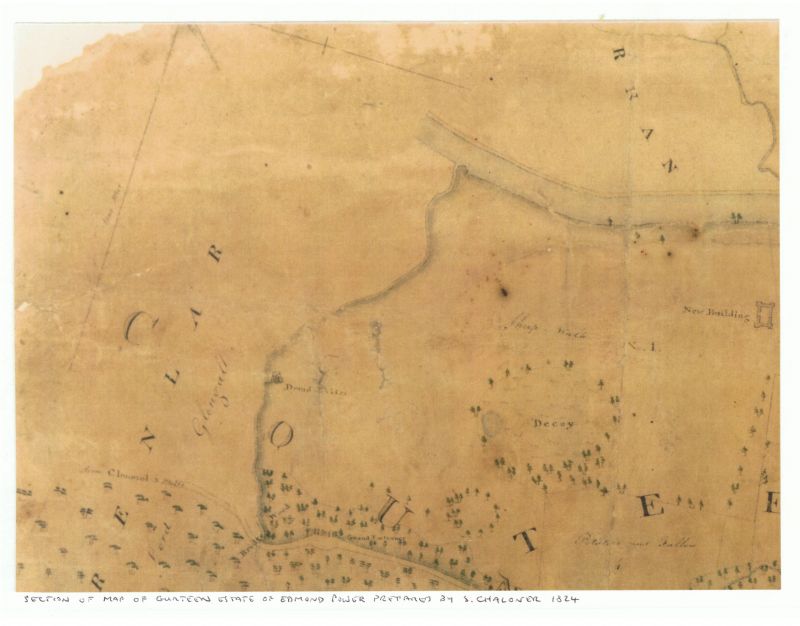
Decoy Lake Map 1824
Initially the lake held (and was fished for) brown trout, which would almost certainly have originated from the nearby River Suir. The first RECORDED stockings of carp, according to the diary of Count Edmond de la Poer, were in 1903. There appears to be no written evidence that suggests an earlier introduction. It is highly probable that they were introduced to this shallow lake as a weed control measure. The exact details of the origins of these carp are unfortunately unclear at this time. However, contrary to popular belief amongst Irish anglers, it does not appear that carp were directly imported from Europe to Decoy Lake.
Decoy Lake 1888-1913
In 1998, Decoy Lake in Co. Tipperary became available to the angling public for the first time through the now defunct Irish Carp Society, although access was limited to a small syndicate of members. The lake and estate had previously been private with very limited angling allowed. Due to reservations among anglers regarding the growth rate, size and the excessive numbers of carp present in the lake at the time, there was an organised destocking of juvenile carp in the years 1999-2001. This was carried out by the Central and Southern Regional Fishery Board in an effort to reduce the overall fish biomass and improve specimen carp angling. Many of these juvenile carp were stocked to designated waters throughout the country. For example, some 65,000 small fish were removed from Decoy in 1999 and 2000 alone. Incidentally, this was the first time that carp of Decoy Lake origin became in any way widespread in Irish waters.
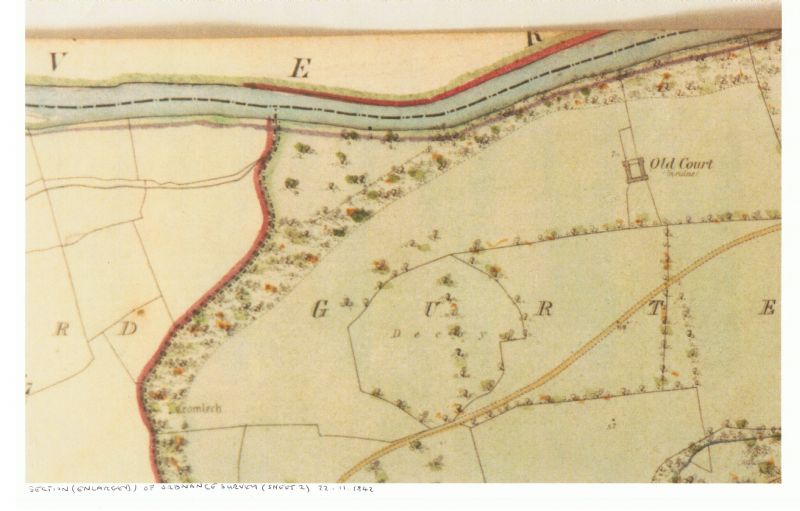
Decoy Lake Map 1842
Due to a demand for larger specimen fish by Irish anglers, a consignment of adult Carp was imported from Pisciculture Horton, Lavardens, France in December 2003. Some 50 or so fish to just below 30lb were stocked into Decoy, whilst the remaining fish (approx. 250 fish to over 30lb) were introduced to Maynooth Fisheries, Co. Kildare.
Decoy Lake history – taken from Brazier et al. (in press)
The Gurteen Estate has been owned by the de la Poer family for centuries (exact date unknown). However, according to early Ordnance Survey maps of the area, the Decoy Lake site did not become completely flooded until the latter half of the 19th century (not shown as a lake in 1824 or 1842, shown as a lake in 1888-1913 map; see attached maps). The lake was originally constructed and used as a duck decoy (hence the name) - an artificial water body designed specifically to aid in the hunting and capture of wildfowl (Heaton, 2001).
Initially the lake held (and was fished for) brown trout Salmo trutta (L.), which would almost certainly have originated from the nearby River Suir. The first recorded stockings of carp, according to the diary of Count Edmond de la Poer, were in 1903 (A. de la Poer, pers. comm.). It is highly probable that they were introduced to this shallow lake as a weed control measure. The exact details of the origins of these carp are unfortunately unclear at this time. However, Contrary to popular belief amongst Irish anglers, it does not appear that carp were directly imported from Europe to Decoy Lake.
In 1998, Decoy Lake in Co. Tipperary became available to the angling public for the first time through the now defunct Irish Carp Society, although access was limited to a small syndicate of members. The lake and estate had previously been private with very limited angling allowed. Due to reservations among anglers regarding the growth rate, size and the excessive numbers of carp present in the lake at the time, there was an organised destocking of juvenile carp in the years 1999-2001 (Caffrey and Hoey, 2001). This was carried out by the Central and Southern Regional Fishery Board in an effort to reduce the overall fish biomass and improve specimen carp angling (Caffrey and Hoey, 2001). Many of these juvenile carp were stocked to designated waters throughout the country. For example, some 65,000 small fish were removed from Decoy in 1999 and 2000 alone (Caffrey and Hoey, 2001). Carp from Decoy Lake were never used in any artificial breeding attempts or official stockings prior to this time (C. Nolan pers. comm., J. Cowen, pers. comm.). Any such reports were simply borne out of the confusion caused by the close proximity of Kilsheelan Pond and Decoy Lake, and the fact that Decoy is also often referred to as Kilsheelan Lake (as per Caffrey and Hoey, 2001). Incidentally, this was the first time that carp of Decoy Lake origin became in any way widespread in Irish waters.
Due to a demand for larger specimen fish by Irish anglers, a consignment of 2.2 tonnes of carp was imported from Pisciculture Horton, Lavardens, France in December 2003. These fish were stocked into Decoy Lake, Co. Tipperary (53 fish up to 12.9 kg (28 lbs. 8 oz.)) and Maynooth Fisheries, Co. Kildare (253 fish up to 14.97 kg (33 lbs.)), both recreational carp fisheries. This importation was contrary to the recommendations made by the relevant regulatory authorities and was the first recorded in Ireland for stocking purposes since 1974 (see Fitzmaurice, 1983)
Other points of interest
-
Lake was spring fed, probably from subterranean channels. Water level of lake began to rise in the 1980s (exact date unknown), subterranean channels thought to have become blocked/damaged etc. as the water level rose significantly in a short period (all A. de la Poer pers. comm.). Although anglers believe the infamous ‘dead trees’ at Decoy died from excessive cormorant guano (very acidic), A. de la Poer insists he had this scientifically checked and that the trees began to die due to the rising water level.
-
One of Irelands most renowned heritage carp waters
-
Decoy Lake produced the largest known Irish carp ever caught, at 32lb 4oz (14.64kg) in 1977 (Fitzmaurice, 1983). The fish was verified by local Inland Fisheries Trust officers but was not submitted as a record carp due to the privacy of the Gurteen Estate at the time. (Obviously this fish has since been beaten by several French fish imported at weights approaching or even exceeding 32lb 4oz).
Key points
-
First stocked with carp in 1903, no written evidence that carp were stocked c. 1890 as believed by all Decoy anglers. Doesn’t mean the 1890 date is not true, but if there is no evidence it cant be used as date of first introduction!
-
Perhaps don’t mention anything about French fish other than they were stocked in Decemeber 2003! Touchy subject…
-
Scientific research is currently being undertaken at University College Cork (UCC) into Irish carp biology, ecology and genetics to understand more about the species in Irish waters, both past and present
-
Brazier et al. paper has yet to receive a final title and has yet to be published, just quote as (in press), due to be published soon etc. Essentially it is a paper on the history of carp in Ireland, from earliest known introductions to present day.




